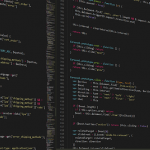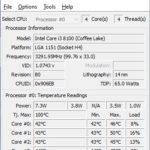Programming is an interesting topic. There are so many different languages, frameworks and other tools that can be used to program. The world of programming is vast and daunting. With new languages and concepts being invented everyday, it can be hard to keep up with the latest trends in this ever-changing landscape. As a result, many programmers turn to online communities such as StackOverflow or Reddit for help when they encounter a problem that’s outside their skill set.
If you’re an aspiring programmer or designer who wants to know more about some of the most common programming terms used in the field, then read on!
Table of Contents
Glossary of Programming Terms
- %1 - %1 is a placeholder for the first argument in many programming languages. It can also be used to represent the...
- 404 Error - Ever stumbled upon a web page that just isn't there? That's a 404 error for you. Imagine you're all set...
- 403 Error - A 403 error is an HTTP status code that means "Forbidden". The user requested access to a resource without proper...
- Autocomplete - Autocomplete is a common term in programming and refers to the ability of an application's text input area to predict...
- Argument - An argument is a statement that explains why something should happen. When applied to programming, an argument can take the...
- ActiveX Data Objects (ADO) - ActiveX Data Object, or ADO for short, is a technology that allows programmers to manipulate data. It was first released...
- A-0 - The first computer compiler ever created was A-0, written by Grace Hopper in 1951. A-0 stands for Arithmetic Language version...
- Aggregate - Aggregate is a programming term that refers to combining or gathering. In other words, aggregate functions are those where the...
- ASCII - ASCII stands for American Standard Code for Information Interchange. It is a code that has been in use since before...
- AJAX - AJAX is an acronym for Asynchronous JavaScript and XML. It's a type of web programming technique that allows you to...
- Batch File - A batch file is a type of script that can be used to automate tasks in the operating system. It...
- Bug - A bug is a programming error that causes the program to behave in an unintended or unanticipated manner. Bugs can...
- Carriage Return - Carriage return is a term used in computing and printing to refer to the action of moving the cursor back...
- Code Migration - Code migration is a process of moving from one code base to another. This could be when you want to...
- CORS - Cross-origin resource sharing is a technique that enables the sharing of resources between two different origins on the web. This...
- COBOL - COBOL is still widely used by many businesses around the world. Data from one source shows that more than 29,010...
- CamelCase - CamelCase is a name that programmers use to describe code. It's also called bicapitalization, InterCaps, medial capitals, Bumpy Case, and...
- Computer Science - Computer Science is a broad field with many different aspects. In this blog post, we will focus on the basics...
- Callback - A callback function is a function that's called by another function. It can be used to set up an event...
- Code Refactoring - Code refactoring is the process of taking an existing piece of code and restructuring it to improve its readability, flexibility,...
- Curly Brackets - We've all seen them before. They're the symbols that look like this: {}. When you see an opening curly bracket,...
- Decryption - Decryption is a powerful tool that allows you to decode messages. Whether you are trying to read an encrypted file,...
- Data Type - A data type is a classification for the kind of information that can be stored in a variable. Data types are...
- Data Item - If you’ve ever used a spreadsheet to organize your finances, you know what data items are. A data item is...
- DayByDayCRM - An organization's success is often dependent on how well they manage their customer relationships. A CRM framework makes it easy...
- DLL - A DLL is a library of code, it stands for Dynamic Link Library. It can be an important part of...
- Debugging, Debugger - Debugging is the process of finding and fixing errors (bugs) in computer programs. The term "debugging" was coined around 1947....
- Database Maintenance - Database maintenance is a series of actions that are taken to ensure the proper functioning of a database. Database management...
- Encryption - Ever since the world wide web was invented, we've been at risk of having our personal information stolen. With more...
- ERP - The erp system is one of the most important aspects of any business. These systems work to automate many different...
- Error Code - You’re in the zone, coding away or browsing your favorite website, when suddenly, a pesky little dialog box pops up,...
- Free List - A free list is a data structure that keeps track of computer memory addresses that are ready to be used...
- Forum - A forum is a place where you can post your thoughts and opinions, create new topics to discuss with other...
- FTP - FTP stands for File Transfer Protocol. It is a network protocol that allows you to upload and download files over...
- Favicon - A favicon is a small icon that you can put on your website to make it stand out. A favicon...
- GitHub - GitHub is a cloud-based service which allows developers store and manage their code using Git subversion control. It helps developers...
- Hamburger Menu - What is a Hamburger Menu? A hamburger menu, also known as an icon menu, is a type of navigation that...
- Hash Key - A hash key, also sometimes called a hash code or just a hash, is a unique identifier for data. Hash...
- Hand Coding - Hand coding is a form of programming where the user types out all the code manually. This includes writing each...
- Haiku Animator - If you have heard about the Haiku Animator app but do not know what it is, look no further. This...
- HTTP Status Codes - HTTP status codes are three-digit numbers sent by web servers to indicate the status of a requested resource or the...
- Inline Image - An image that you can insert into your site to provide information, add a little style or represent hyperlinks is...
- jQuery - The introduction of jQuery has revolutionized the way web developers write code, making it easier to create interactive, dynamic websites....
- Keep-Alive - The Keep-Alive HTTP header is an important part of the HTTP protocol. It was created to make web pages load...
- Kebab menu - In any mobile app and software like Chrome, you will see an icon that can be clicked to expand a...
- Lazy Loading - A lot of people know that making a website load faster is important for conversion rate optimization. However, many designers...
- Localization - In today's globalized world, it is important for businesses to be aware of the importance of localization. Localization is defined...
- LAMP - The LAMP stack is a set of open-source software that provides a server-side platform for web development. It consists of...
- Language Generation - A programming language generation is a categorization of different programming languages according to their relative age and complexity, with newer...
- Logic Error - Logic errors are one of the most frustrating and difficult bugs to fix in a program. They often cause the...
- Media Queries - CSS Media Queries is a type of conditional statement that could be used for targeting specific screen sizes. It can...
- MEAN stack - The MEAN stack is a full-stack JavaScript solution that can be used to build robust and powerful web applications. The...
- Markdown Editor - Articles written in Microsoft Word look messy when posted online because they carry formatting from the word processor and are...
- NoSQL - NoSQL stands for "non-relational database." NoSQL databases are a type of database that is not relational. This means it does...
- npm - npm stands for "Node Package Manager" and is essentially a tool that allows developers to easily download, install, and manage...
- OCaml - OCaml is an imperative, object-oriented programming language with static typing. It's a precision tool for developing applications that manipulate fine...
- Open Journal Systems - Open Journal Systems (OJS) is a free, open-source software project for scholarly publishing. It includes features such as article submission...
- Public Domain Software - Public Domain Software is a special type of software for which the copyright has expired and as such, can be...
- PPL - PPL stands for pay-per-lead. This type of advertising is a cost per acquisition model, where the advertiser pays the publisher...
- PixiJS Bunny Mark - PixiJS Bunny Mark is a tool made by the team behind Pixi JS, a JavaScript and HTML5 game engine. It...
- Programmer - Programming is one of the most lucrative careers today. Many people want to know what it takes to become a...
- Quantum Programming - The power of quantum computing is often compared to the immense computational power of our brains. But there are many...
- Release Candidate - Release candidates are the final state of a software application before it's released. It is also called "Beta" or "Test"...
- SSG - A static site generator, often abbreviated to SSG, can seem like a somewhat nebulous concept if you're new to the...
- Static Website - Static websites have a lot to offer. They're like that reliable, old friend who always has your back. They may...
- SHTML - The Server-parsed HyperText Markup Language is known as SHTML. Their files are HTML web pages that have the ability to...
- Software Crisis - Software crisis can be defined as the sudden and pervasive realization that the current system may not meet the demands...
- SSH - The whole point of the internet is to share information in a way that's open and easy. But when you...
- Slim - My friend had been using WordPress for a small website about online tools before he switched over to the Slim...
- Source Code - You might not recognize this word but chances are that you've seen at least a little bit of what looks...
- Socket Timeout - The socket timeout is an important setting that should not be overlooked. It's a set time period where the server...
- Transaction File - A transaction file is a file that contains all the information needed to process a financial transfer. This includes the...
- Unity - So you're dipping your toes into game development, huh? One big question you're probably wrestling with is: which game engine...
- Version - A version is a set of digits that represent the release date and specific changes to the program. Software versions...
- Web 2.0 - The term "Web 2.0" was coined in 1999 by Darcy DiNucci, an American futurist and web technology consultant. It is...
- What is the Amazon Web Services Free Tier? - When it comes to cloud computing, Amazon Web Services (AWS) is a name that stands out. AWS offers a wide...
- YAML - YAML stands for "YAML Ain’t Markup Language." A YAML file is a document that contains information about the data in a...
35+ Common Programming Terms
- Algorithm – A set of well-defined instructions to carry out a task, especially in mathematics.
- Program – A specific piece of software designed to do certain tasks.
- API – Application Programming Interface; a library/collection of pre-written code that can be used by other programs, typically shared with the aim of making writing various kinds of software easier. APIs are built to be used by other computer programs, not by humans. Programs have been created so that you can communicate with them via the API. For example, an API will include things like how to get input from a user or what commands you would send in order to change something about your program. APIs are often listed on software download pages under ‘documentation’ or ‘header files.’
- Argument – A value provided to a function/method call when it’s invoked. This will determine the behavior of the function/method. In programming languages where arguments are passed by reference, changes made to argument values inside the function/method may affect the original value. However, such behavior is not clearly specified (or intended) in many other programming languages.
- ASCII – A coding system allowing representations of text or characters; can be used to represent any symbol that has a unique character code (i.e., 0 for NULL, 1 for START OF HEADING).
- Boolean – An argument taking an input of TRUE or FALSE; often found in conditionals and loops. Can also mean the data type representing such an argument. For example, an API may use boolean values to determine what options were selected by the user/programmer (e.g., whether they want their program to print debugging information when it runs).
- Char – A single letter or other written symbol, typically presented as 2 bytes/16 bits in memory (in which case each byte is represented in hexadecimal with the letters A-F).
- Objects – Collections of programming code that act as an individual object/unit within a program. For example, this could be something like an image processing unit that takes in input, modifies it somehow, then outputs the modified image. Or it could be simply something like a label taking in text input which you want to display on screen. This is known as ‘OOP’ or Object-Oriented Programming.
- Class – A description of what types of things will exist within your program; used in OOP. For example, you might have a class called ‘shape,’ which will contain all shapes found in your program (circle, triangle, square). A class is basically like a blueprint for objects – it defines the contents of an object, but not its behavior.
- Code – Programming statements; used in contrast to data (which includes things like numbers and texts which aren’t executable by themselves).
- Command-line interface – A type of user interface through which users can type commands and get information about their computer (or other connected devices) in return. Also known as a terminal or console. Computer people may sometimes say “shell” when referring to the command line because shells provide an environment where these commands are executed.
- Compilation – Converting something like C++ or Java code into machine-readable object files, which can then be linked together (binding them all to work in unison) by the linker. Some languages are not compiled but executed directly, instead they are interpreted. For example, Lua is an interpreted language while C compiles before execution.
- Conditionals – Statements that determine what your program will do based on some kind of logical test (e.g., if I press THIS button THEN carry out THIS action).
- Constants – Values which remain mostly the same throughout the duration of a running program; usually unchangeable/immutable. Constants may still vary according to external factors such as user input or environmental conditions though.
- Data types – An amount of information that can be stored in memory. For example, integers (positive or negative whole numbers), floating point numbers (decimal values), and characters/text files are all data types. While classes (blueprints) refer to what an object will look like in terms of attributes (size, color, type).
- Array – A collection of related variables placed in contiguous memory; easier for access than separately defined variables. This doesn’t necessarily make it any faster though; in fact sometimes it’s slower because accessing unrelated elements in different places may require cache misses. It’s also possible to make arrays completely un-contiguous by splitting them up over multiple pages.
- Declaration – Specifying the name and data type of a variable within your program.
- Exception – Sometimes referred to as an error or fault; some kind of discrepancy between what your program is actually doing (the statement) and what it’s supposed to be doing (the expected outcomes). For example, if you were writing a program for processing files and tried to open one that doesn’t exist, then that would be throwing an exception.
- Expression – A combination of variables/constants with operators that evaluates into a single value (e.g., 10 + 5 / 2 * 3 ). Expressions are very common in programming because they’re the raw materials used by almost all high-level languages.
- Framework – A collection of subroutines which can be used together to simplify how you write code; essentially its own little programming language in which you have to do less work in order to complete tasks. For example, Qt is a framework for desktop applications.
- Front-end – A designation referring to the upper part of something (as opposed to its back-end). Often used in reference to computers, where it might refer to the screen that’s being displayed or the part of an application that users are interacting with directly.
- High-level language – Programming languages which focus on giving human-readable commands that are easily understandable by people rather than machines. Low-level languages are more direct and suited towards very specific types of machine operations; they’re harder for people to use even though they require less work from computer processors.
- Machine language – The lowest level language available to a computer processor, which consist entirely of numbers and binary code (e.g., 01100001 ).
- Markup language – A programming style which uses special markup symbols or tags in order to adjust how text is displayed when it’s being rendered by a program. For example, HTML is a markup language because different kinds of text have unique highlight factors such as bold, italic, and underlined. This kind of tagging system enables the creation of web pages that can be shared with other browsers/computers; if there were no means to distinguish between regular text and highlighted text then everything would come out looking the same! Programmers often use markup languages for their source data instead of writing within a regular programming environment like they would do normally.
- Null – A data type which represents no value as opposed to an actual value such as a number or character.
- Operand – A sequence of symbols that represent some kind of data; the first operand is often used for one purpose and the second is sometimes used for another (depending on what kind of program you’re writing). For example, if you had two numbers then they would be your operands and your expression would consist of + and / operators.
- Operator – A symbol representing a specific operation; different ones will result in different actions being taken by your code (e.g., addition, subtraction, multiplication, division).
- Hardcode – To make something fixed (e.g., the text “This is my name” instead of letting it render as whatever would come out if you typed it in).
- Loop – To execute a sequence of code over and over again until some condition has been met; this technique can be used to save time since you don’t always have to write each command individually.
- Iteration – Name for the act of repeating something until it’s finished; often used in reference to loops (e.g., “The iterator goes round and round…”).
- Statement – A line or series of lines that represents some kind of code with an implicit purpose (such as printing a message on screen, adding two numbers together, etc.). Statements can be nested inside other statements which essentially enables you to build your own little programming language using only a handful of components.
- Variable – A named storage slot where you can put information that you want to pull back out later; variables give you the ability to write less data/code because you don’t have do as much each time you need the same thing again. The name of a variable generally has to have the first letter capitalized and it cannot be a reserved word (e.g., you can’t use int , for , or while as your variable names because they represent specific things in programming).
- Pointer – A type of memory location that stores the address where something will be stored; this works by pointing to an existing data object rather than creating a new one, which enables your computer’s resources to be used more efficiently (i.e., why you don’t want to make any more variables than you need to).
- Package – Refers to anything that’s bundled together or wrapped up into one file/type; this would include different files, libraries, and programs all bundled into a single package/distribution.
- Runtime – A phase in the life cycle of some software where it’s executed by a computer/programmer; if you can’t go back and change your source code after you’ve written it then the process is at runtime instead of being compiled .
- Server-side – When script is run on a web server before being sent to the client (e.g., PHP, ASP) or another machine that wouldn’t otherwise have access to that file (e.g., JavaScript). This term may also describe something that’s on the opposite end of an action such as making requests from your server rather than having everything come directly from client-side code .
- Source data – Data coming a program before it’s been manipulated in any way; this is the raw input that’s going to be used for a program.
- Syntax – The arrangement of words, numbers, symbols, etc., according to specific rules (e.g., which parts go where and how they’re ordered).
- Token – A series of characters combined together to represent something different from its components ; often used in conjunction with operators/operands .





